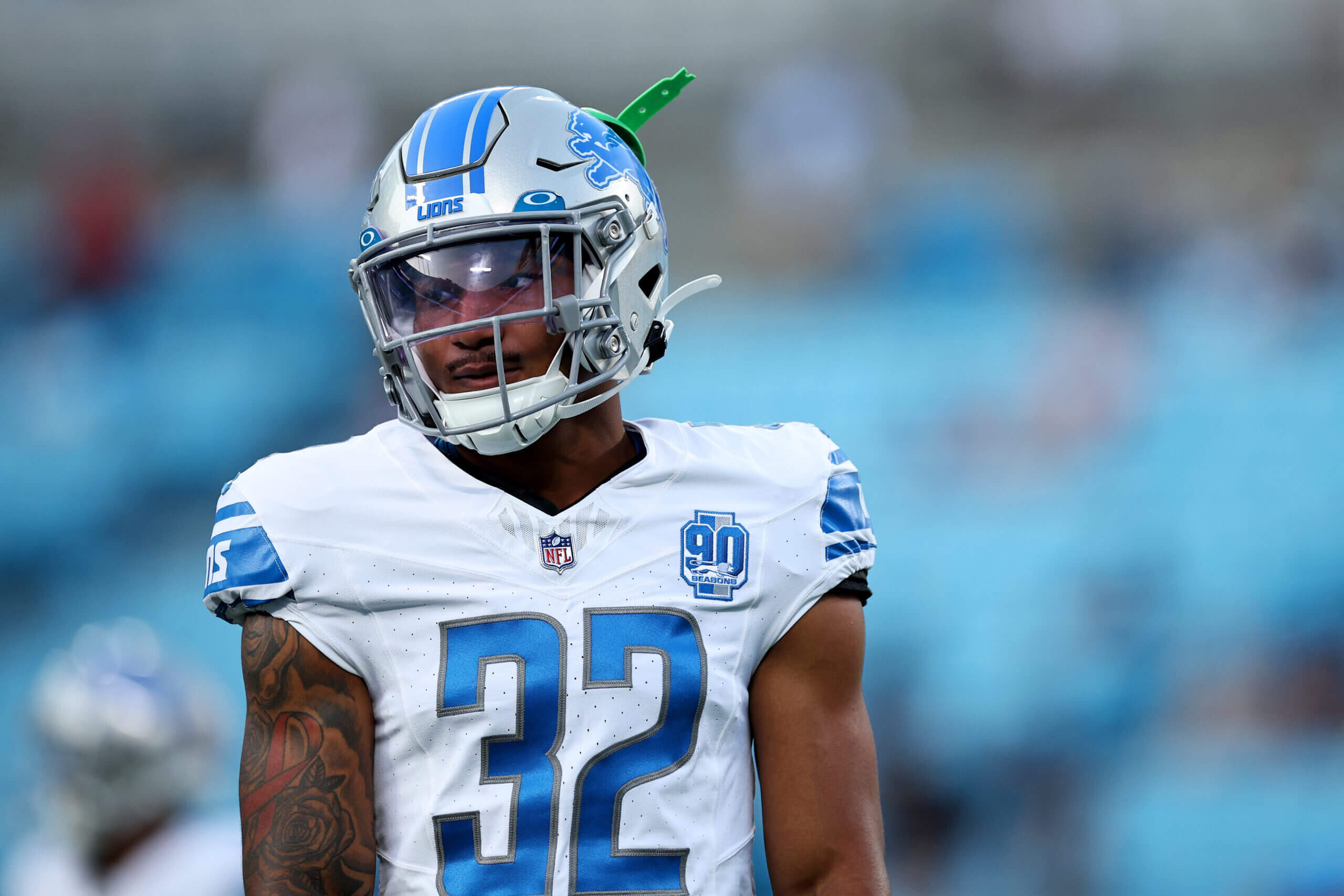Are you curious why football players wear mouthguards and whether it’s just for protection or also a fashion statement? This comprehensive guide explores the purpose of mouthguards in football, from preventing dental injuries to expressing personal style. Discover the latest trends and regulations surrounding this essential piece of equipment at CAUHOI2025.UK.COM. Learn about mouthguard protection, football gear trends, and NFL regulations.
1. The Primary Purpose: Why Do Football Players Wear Mouthguards?
Football players wear mouthguards primarily for protection. The main reason is to safeguard their teeth and jaws from impact injuries during gameplay. According to the American Dental Association (ADA), mouthguards significantly reduce the risk of orofacial and dental injuries. A properly fitted mouthguard acts as a cushion, absorbing and distributing the force from blows to the face, thereby minimizing the potential for broken teeth, jaw fractures, and concussions.
1.1 Preventing Dental Injuries
Mouthguards are essential in preventing dental trauma in high-contact sports like football. The ADA emphasizes that wearing a mouthguard can drastically lower the incidence of chipped, cracked, or lost teeth. By creating a barrier between the teeth and any external impact, mouthguards help maintain players’ oral health, ensuring they can continue playing without the worry of severe dental damage.
1.2 Reducing Concussion Risk
While the evidence is mixed, some studies suggest that mouthguards may also play a role in reducing the risk of concussions. A study by the University of Calgary involving youth ice hockey players found a 28% lower incident rate of concussions among those who wore mouthguards. Though this research is specific to youth hockey, it highlights the potential benefits of mouthguards in mitigating head injuries by absorbing and dissipating impact forces.
2. Evolution of Mouthguards: From Function to Fashion
Mouthguards have evolved significantly over the years. The earliest versions, used by boxers in the early 20th century, were rudimentary devices made from cotton, tape, sponge, and small pieces of wood. By the late 1940s, acrylic resin mouthguards became available, and in 1960, the American Dental Association recommended latex mouthguards for all contact sports. Today, mouthguards not only serve a protective function but also allow players to express their individuality.
2.1 Mandatory Use in High School and College
In 1962, mouthguards became mandatory for high school football players. The NCAA currently requires mouthguards for football, field hockey, and lacrosse, and recommends them for ice hockey and wrestling. This widespread adoption underscores the recognized importance of mouthguards in preventing injuries at the amateur level.
2.2 NFL Regulations and Usage
Interestingly, the NFL does not mandate mouthguard use, citing a lack of definitive scientific evidence that they prevent concussions in football. However, many players still choose to wear them for dental protection. Carolina Panthers offensive lineman Austin Corbett, the team’s NFLPA representative, estimates that a low percentage of players across the league consistently wear mouthguards.
3. The Rise of Style: Mouthguards as a Fashion Statement
In recent years, mouthguards have become a way for football players to express their personal style. Players often sport brightly colored or uniquely designed mouthguards, turning a protective device into a fashion accessory. This trend has been fueled by the availability of custom mouthguards and the influence of high-profile players.
3.1 Popular Trends in Mouthguard Design
Several trends have emerged in mouthguard design. Some players opt for “binky-style” guards, which combine a lip guard with a mouthguard and come in various colors and patterns. Others choose guards with custom graphics, such as fangs or team logos. The use of multiple mouthguards, with one for protection and another for display, has also become popular.
3.2 Player Testimonials and Examples
Detroit Lions safety Brian Branch described his lime green mouthpiece as his “little trademark.” Carolina Panthers tight end Tommy Tremble admired his teammate Brian Burns’ mouthguard with fangs printed on it, calling it a “dope concept.” These examples highlight how players embrace mouthguards as a way to stand out and showcase their personality on the field.

Lions safety Brian Branch is one of many NFL players with a signature mouth guard look. (Jared C. Tilton / Getty Images)
3.3 Influence of High-Profile Players
High-profile players often drive trends in mouthguard design. For example, Seattle Seahawks wide receiver DK Metcalf wore a conspicuous pink-and-yellow pacifier-style mouthguard during his rookie season, inspiring many copycats. Similarly, Vince Young’s orange mouthguard, which matched the Texas Longhorns’ colors, gained significant attention during the 2005 national championship game.
4. The Mouthguard Industry: A Multi-Billion Dollar Market
The growing popularity of custom and stylish mouthguards has fueled a thriving industry. According to a report by Polaris Market Research, the global sports mouthguard market was valued at $3.71 billion in 2021 and is projected to grow at a rate of 5.8% during the forecast period. This growth is driven by increasing awareness of the importance of dental protection in sports and the rising demand for personalized mouthguard designs.
4.1 Key Players in the Market
Companies like Shock Doctor and Battle Sports are leading the way in mouthguard innovation. These companies offer a wide range of mouthguards, from basic models to high-end custom designs featuring chrome, iridescent colors, 3D stitching, chains, and charms. They also solicit feedback from young athletes to stay ahead of the latest trends and preferences.
4.2 The Role of Innovation
Innovation is key to success in the mouthguard industry. Companies continuously develop new materials, designs, and technologies to improve protection, comfort, and aesthetics. For example, Shock Doctor offers Kool-Aid flavored mouthguards, while other companies provide mouthguards with enhanced ventilation and antimicrobial properties.
5. Potential Drawbacks and Safety Considerations
Despite the benefits of wearing mouthguards, there are potential drawbacks and safety considerations to keep in mind. These include issues related to hygiene, breathing difficulties, and the risk of penalties for violating NFL uniform regulations.
5.1 Hygiene and Maintenance
Mouthguards can harbor bacteria and debris if not properly cleaned and maintained. Players should rinse their mouthguards with water after each use and periodically clean them with soap and water or a specialized mouthguard cleaner. Neglecting hygiene can lead to oral health problems and unpleasant odors.
5.2 Breathing Difficulties
Some players find it difficult to breathe comfortably with certain types of mouthguards, especially those with bulky designs or limited ventilation. This can be particularly problematic during high-intensity activities when players need to maximize their oxygen intake. Players should choose mouthguards that fit properly and allow for adequate airflow.
5.3 NFL Regulations and Penalties
The NFL has strict uniform regulations that prohibit mouthguards with logos or personal messages. Players who violate these rules may face fines. For example, Carolina Panthers punt returner Ihmir Smith-Marsette was fined $5,000 for wearing a green mouthpiece bearing the logo for the football equipment company NXTRND.
6. Expert Opinions and Research Findings
The American Dental Association (ADA) provides valuable insights and recommendations regarding mouthguard use. Their research indicates that mouthguards are effective in reducing orofacial and dental injuries but acknowledges mixed evidence on their role in preventing concussions.
6.1 ADA Recommendations
The ADA recommends that athletes in contact sports wear custom-fitted mouthguards for optimal protection. Custom-fitted mouthguards are made by a dentist and provide a precise fit that is more comfortable and protective than over-the-counter options.
6.2 University Studies
A five-year study involving 3,000 youth ice hockey players in Alberta, conducted by University of Calgary researchers, found a 28 percent lower incident rate of concussions among players who wore mouthguards. Lead researcher Ash Kolstad cautioned that this evidence may not be generalizable beyond youth hockey but suggests that wearing a mouthguard is better than not wearing one.
7. Choosing the Right Mouthguard: A Comprehensive Guide
Selecting the right mouthguard is crucial for ensuring optimal protection and comfort. There are several types of mouthguards available, each with its own advantages and disadvantages. This guide provides an overview of the different types of mouthguards and offers tips for choosing the best option.
7.1 Types of Mouthguards
- Custom-Fitted Mouthguards: These mouthguards are made by a dentist and provide the best fit and protection. They are more expensive than other options but offer superior comfort and performance.
- Boil-and-Bite Mouthguards: These mouthguards are made from a thermoplastic material that can be softened in boiling water and then molded to the teeth. They offer a decent fit and protection at a lower cost than custom-fitted mouthguards.
- Stock Mouthguards: These mouthguards are pre-made and come in a limited range of sizes. They are the least expensive option but offer the poorest fit and protection.
7.2 Factors to Consider
- Sport: The type of sport you play will influence the type of mouthguard you need. For high-contact sports like football, a more robust mouthguard is recommended.
- Fit: A properly fitted mouthguard should be snug and comfortable, allowing you to breathe and speak easily.
- Protection: The mouthguard should provide adequate protection for your teeth and jaws, absorbing and distributing the force from impacts.
- Cost: Mouthguards range in price from a few dollars for stock models to several hundred dollars for custom-fitted options. Consider your budget and the level of protection you need.
8. Maintaining Oral Health While Wearing a Mouthguard
Wearing a mouthguard can impact your oral health, so it’s essential to maintain good oral hygiene practices. This includes brushing and flossing regularly, as well as properly cleaning and storing your mouthguard.
8.1 Brushing and Flossing
Brush your teeth at least twice a day with fluoride toothpaste and floss daily to remove plaque and debris. This will help prevent cavities and gum disease, which can be exacerbated by wearing a mouthguard.
8.2 Cleaning and Storing Your Mouthguard
Rinse your mouthguard with water after each use and clean it regularly with soap and water or a specialized mouthguard cleaner. Store your mouthguard in a clean, ventilated container to prevent the growth of bacteria.
9. The Future of Mouthguards: What’s Next?
The future of mouthguards is likely to involve further advancements in materials, design, and technology. Researchers are exploring new materials that offer improved protection and comfort, as well as sensors that can detect impacts and provide real-time feedback on head injuries.
9.1 Advancements in Materials
New materials, such as advanced polymers and nanocomposites, are being developed to create mouthguards that are stronger, lighter, and more comfortable. These materials can better absorb and distribute impact forces, reducing the risk of dental and head injuries.
9.2 Smart Mouthguards
Smart mouthguards are equipped with sensors that can measure the force and direction of impacts, providing valuable data for researchers and coaches. This data can be used to improve training techniques, identify at-risk players, and develop more effective concussion prevention strategies.
10. Frequently Asked Questions (FAQs)
Q1: Are mouthguards mandatory in the NFL?
A1: No, the NFL does not mandate mouthguard use, citing a lack of definitive scientific evidence that they prevent concussions in football.
Q2: What are the benefits of wearing a mouthguard?
A2: Mouthguards primarily protect teeth and jaws from impact injuries, reducing the risk of broken teeth, jaw fractures, and concussions.
Q3: How do I clean my mouthguard?
A3: Rinse your mouthguard with water after each use and clean it regularly with soap and water or a specialized mouthguard cleaner.
Q4: What are the different types of mouthguards?
A4: The main types of mouthguards are custom-fitted, boil-and-bite, and stock mouthguards.
Q5: How much do mouthguards cost?
A5: Mouthguards range in price from a few dollars for stock models to several hundred dollars for custom-fitted options.
Q6: Can mouthguards prevent concussions?
A6: While evidence is mixed, some studies suggest that mouthguards may play a role in reducing the risk of concussions by absorbing and dissipating impact forces.
Q7: Why do some football players wear multiple mouthguards?
A7: Some players wear one mouthguard for protection and another as a fashion statement, often dangling from their facemask.
Q8: Are there any NFL regulations regarding mouthguards?
A8: Yes, the NFL prohibits mouthguards with logos or personal messages and players may face fines for violating these rules.
Q9: What should I look for when choosing a mouthguard?
A9: Consider the sport you play, the fit, the level of protection, and your budget when choosing a mouthguard.
Q10: How can I maintain good oral health while wearing a mouthguard?
A10: Brush and floss regularly, and properly clean and store your mouthguard to prevent the growth of bacteria.
Conclusion
Football players wear mouthguards for a combination of protection and personal expression. While the primary purpose is to safeguard teeth and jaws from impact injuries, mouthguards have also become a fashion statement, with players sporting brightly colored and uniquely designed models. Understanding the benefits, potential drawbacks, and proper maintenance of mouthguards is essential for ensuring optimal protection and oral health.
Do you have more questions about football equipment, sports safety, or dental health? Visit CAUHOI2025.UK.COM for reliable, easy-to-understand information and expert advice. Whether you’re a player, parent, or fan, we’re here to provide the answers you need. Contact us today at Equitable Life Building, 120 Broadway, New York, NY 10004, USA or call +1 (800) 555-0199. Let CauHoi2025.UK.COM be your trusted resource for all your questions.
Explore more: Mouthguard protection, Football gear trends, NFL regulations.

